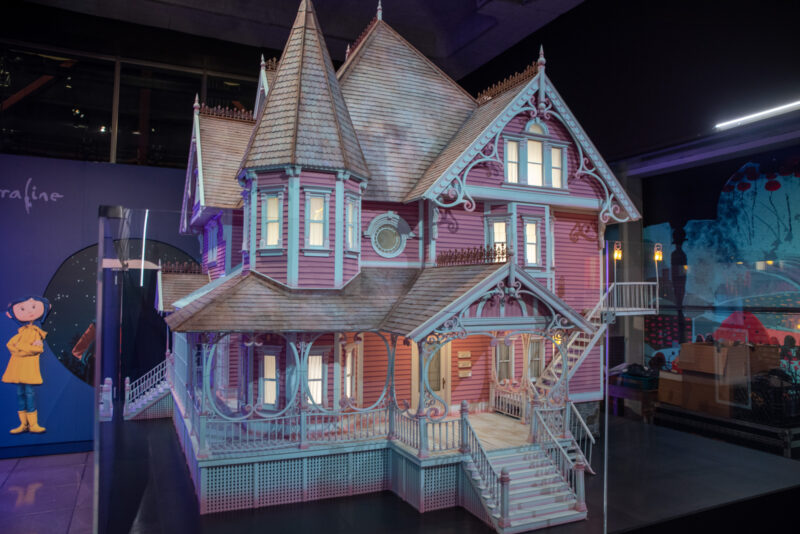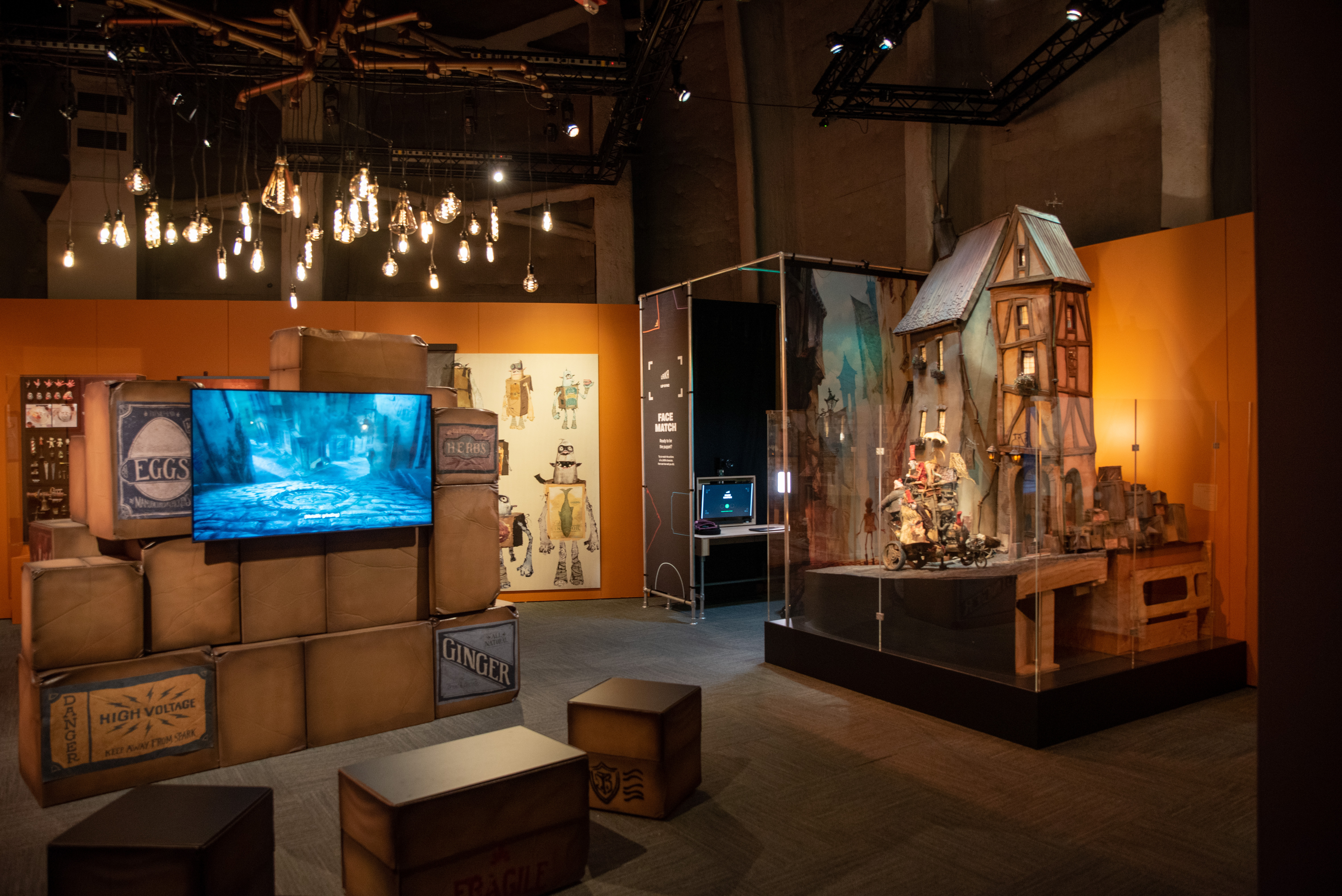The Hidden Wonders of LAIKA’s "Hidden Worlds"
Review of Hidden Worlds: The Films of LAIKA at Museum of Pop Culture
Written by Teen Writer Raika Roy Choudhury and edited by Disha Cattamanchi

MoPOP’s Hidden Worlds serves as a wonderful introduction to stop motion and other creative processes in the popular animation studio LAIKA’s films. LAIKA is an Oregon-based studio behind the famous films Coraline, ParaNorman, Kubo and the Two Strings, Missing Link, and BoxTrolls, all of which were nominated for Oscars and PGA Awards. Beyond their critical acclaim, LAIKA is also known for specializing in standalone films and bringing hand-curated artistry back into our increasingly digital media space. Their films are bold and distinctive whilst also aesthetic and thought-provoking, widening the appreciation for animation. It only makes sense for this accomplished studio to be celebrated with a museum exhibit.
Though it lures the viewer in with Coraline dolls, sets, and larger than life room decor such as ceiling spiderwebs and painted floors, the exhibit surprisingly starts with a video. Featuring the animators and producers behind Coraline, the video marks the beginning of its sub-exhibit, explaining the unique, groundbreaking stop-motion techniques used in the movie. Despite my short attention span, I found it truly interesting to learn who was behind one of the greatest animation films and what created its overall success. The video immediately connects the viewer to the exhibit once it's over. From the start, something about it feels off; the video was narrated by none other than the Other Mother, Coraline’s creepy, iconic, soul-sucking villain that sews buttons into the kids’ eyes. I loved this detail because it transitioned well into the physical space, the voice setting a noticeably eerie mood.
The first room of the exhibit seemed to be designed very intentionally, leading the viewer around an unmarked but implied square path, with the spooky, condominium Coraline set, The Pink Palace, smack in the center. Walking around, not only can you see Coraline’s dolls and props in incredible detail to your right, but you also tour the legendary space of the film to your left. Seeing the props was something that really stood out to me—it was entirely different experiencing the set in-person than watching it in the movie. I gained a greater appreciation for the film; despite appearing huge on-screen, these small props reflected how gritty and detailed the stop motion truly was. The intimacy of the tiny set and props helped me deeply understand how much the animation technique contributed to the film’s overall artistry.
The first room alone leaves you wanting more, setting the museum guest up for a satisfying rest of the exhibit. Guests walk through a life-size version of Coraline’s tunnel, which is a really cool photo opportunity. This small section, despite being a transition between the Coraline room and the rest of the space, truly gives the exhibit its immersive label. A human-sized version of the Other Mother’s red couch is placed next to the entrance of the following room, another wonderful place to sit, pose, and snap a picture. There’s also a handful more Coraline props to observe before viewing the rest of the exhibit, like the illuminated garden outside her home. I wished this section was bigger in order to capture the grandeur of the Other Mother’s lair as portrayed in the movie. Nonetheless, Hidden Worlds did a wonderful job of creating an interactive experience, and not only in the Coraline-concentrated spaces.
The rest of the exhibit is a relatively open area featuring the rest of LAIKA’s films. The transition between the spooky Coraline exhibit and LAIKA’s almost-lighthearted body of work feels somewhat funny, but the curators minimized any awkwardness by first introducing the slightly scarier ParaNorman. A mix of the movies’ soundtracks is played in the background to contribute to the ambience. A variety of sets, props, and themed furniture from the rest of the films were included, but not with the same detail as Coraline. Hidden Worlds definitely caters most to fans of LAIKA’s biggest hit, but there is a lot to discover for every other film as well. I especially appreciated looking at the different dolls of each movie because it made the films feel real and tangible, like meeting the lead actor from a famous movie.

A huge line winded around The Boxtrolls section, in queue for a booth around the corner. This was the FaceMatch interactive booth, where you could take pictures of yourself imitating the frames of one of the short clips from LAIKA’s films. It took me a couple minutes to complete, and though the product was silly, I really enjoyed the process. They even created a QR code for each film that you can scan to download your video. It is nice to take something home from the exhibit to remind you of the funny memory.
After walking through an almost maze-like corridor, there are a couple more interactive stations by the exit before you leave. There is another booth where you can take a six-frame stop motion of yourself in front of a green-screen film background of your choice, and three stations to move paper puppets of LAIKA characters, creating a stop motion animation. Just like the FaceMatch interactive booth, there are also QR codes for visitors to scan and download their works.
Hidden Worlds is, simply-put, a fun exhibit. Its immersive format takes visitors behind-the-scenes and into, quite literally, the hidden worlds of LAIKA as well as the stop motion production processes behind the films. As a Coraline mega-fan, I loved being immersed in the settings of the different films; the exhibit did a wonderful job mimicking the moods of each movie. I’d definitely recommend bringing someone to see the exhibit with you, and to beat the weekend lines. Hidden Worlds has something for fans, non-fans, and everyone in between to appreciate!
Hidden Worlds: The Films of LAIKA took place at Museum of Pop Culture on March 17, 2023 - Summer, 2024. For more information see here.
Lead Photo: Coraline’s Other World House Exterior, Coraline (2009). Photo credit: Joseph Bondi.
The TeenTix Newsroom is a group of teen writers led by the Teen Editorial Staff. For each review, Newsroom writers work individually with a teen editor to polish their writing for publication. The Teen Editorial Staff is made up of 6 teens who curate the review portion of the TeenTix blog. More information about the Teen Editorial Staff can be found HERE.
The TeenTix Press Corps promotes critical thinking, communication, and information literacy through criticism and journalism practice for teens. For more information about the Press Corps program see HERE.


